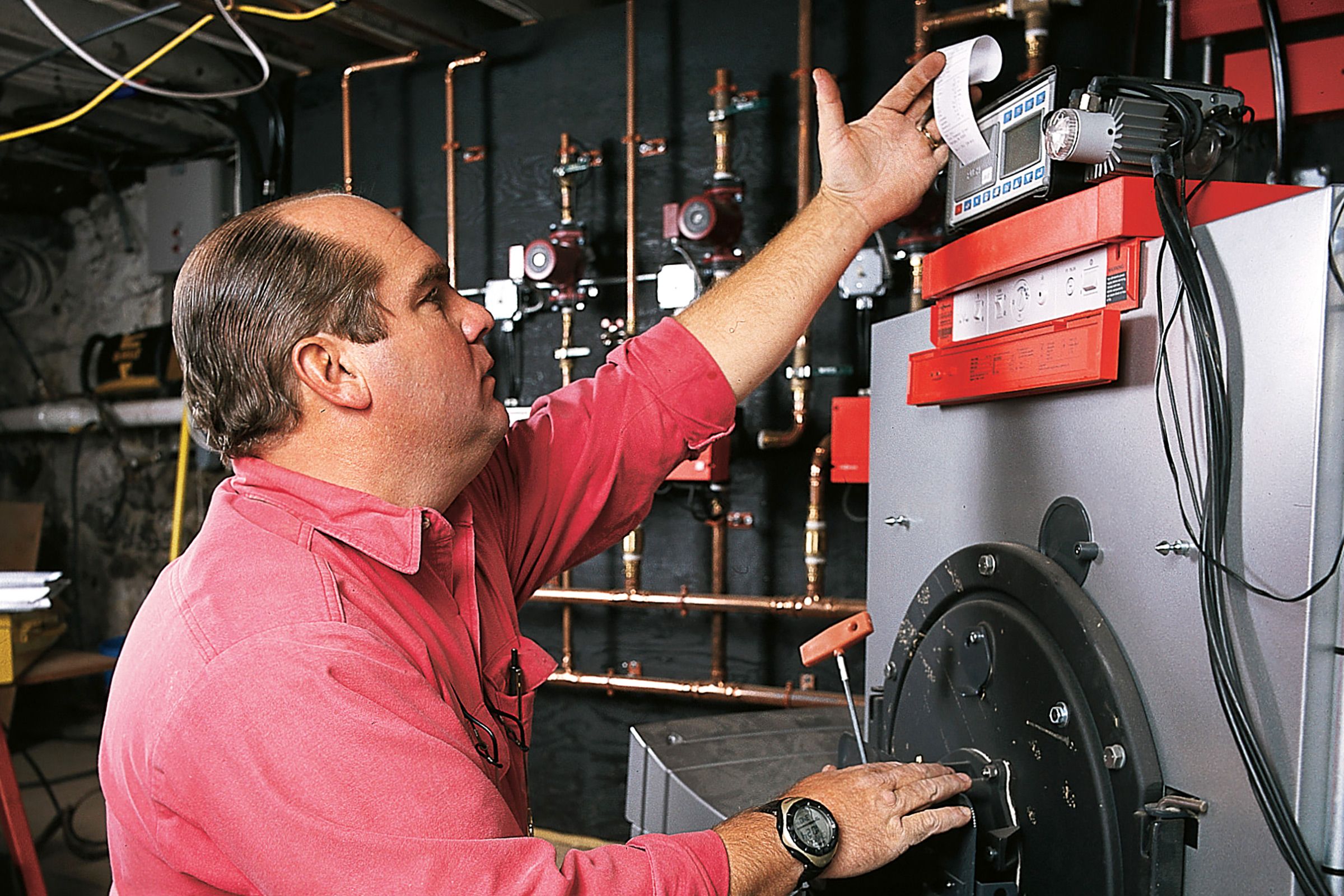Heating, ventilating, and air-conditioning (HVAC) systems are the backbone of indoor comfort in modern homes. These systems consume nearly half of a home’s energy bill, making efficiency even more important. Whether you’re building a new home or upgrading an existing one, knowing HVAC basics helps you create a comfortable, energy-efficient living space. This guide walks you through the key components, considerations, and innovations in HVAC technology to help you make informed decisions about your home’s heating and cooling needs.
Understanding HVAC Basics
What Is HVAC?
HVAC stands for Heating, Ventilation, and Air Conditioning. This system controls the temperature, humidity, and air quality in your home. It includes various components that work together to keep your indoor environment comfortable year-round.
Why HVAC Matters for Your Home
An efficient HVAC system maintains a comfortable living space and manages energy costs. It affects your home’s air quality, temperature control, and overall energy consumption. A well-designed HVAC system can significantly reduce your carbon footprint and monthly utility bills.
Choosing the Right HVAC System
Choosing an HVAC system involves making decisions that will impact your home’s comfort and energy efficiency for years to come.
Heat With Water or Air?
When selecting an HVAC system, you’ll need to decide between water-based and air-based heating. Water-based systems, like radiant floor heating, offer efficient and comfortable warmth. Air-based systems, such as forced-air furnaces, are more common and can be combined with central air conditioning.
Cooling Options for Your Home
Central air conditioning is a popular choice for cooling. However, heat pumps offer both heating and cooling capabilities, making them an efficient option for many homes. Consider your climate and home layout when choosing a cooling system.
Key Components of a Modern HVAC System
Modern HVAC systems comprise various components that work in tandem to heat, cool, and ventilate your home efficiently.
- Air conditioners and heat pumps: Air conditioners remove heat from indoor air to cool your home. Heat pumps can both heat and cool by transferring heat between indoor and outdoor air. These systems are becoming increasingly efficient and popular.
- Boilers and furnaces: Boilers heat water for distribution through radiators or radiant floor systems. Furnaces heat air and distribute it through ductwork. Various fuel sources, including natural gas, oil, or electricity, can power both.
- Ductwork and ventilation: Proper ductwork design leads to efficient air distribution. Ventilation systems, including exhaust fans and air exchangers, help maintain indoor air quality by removing stale air and bringing in fresh air from the outside.
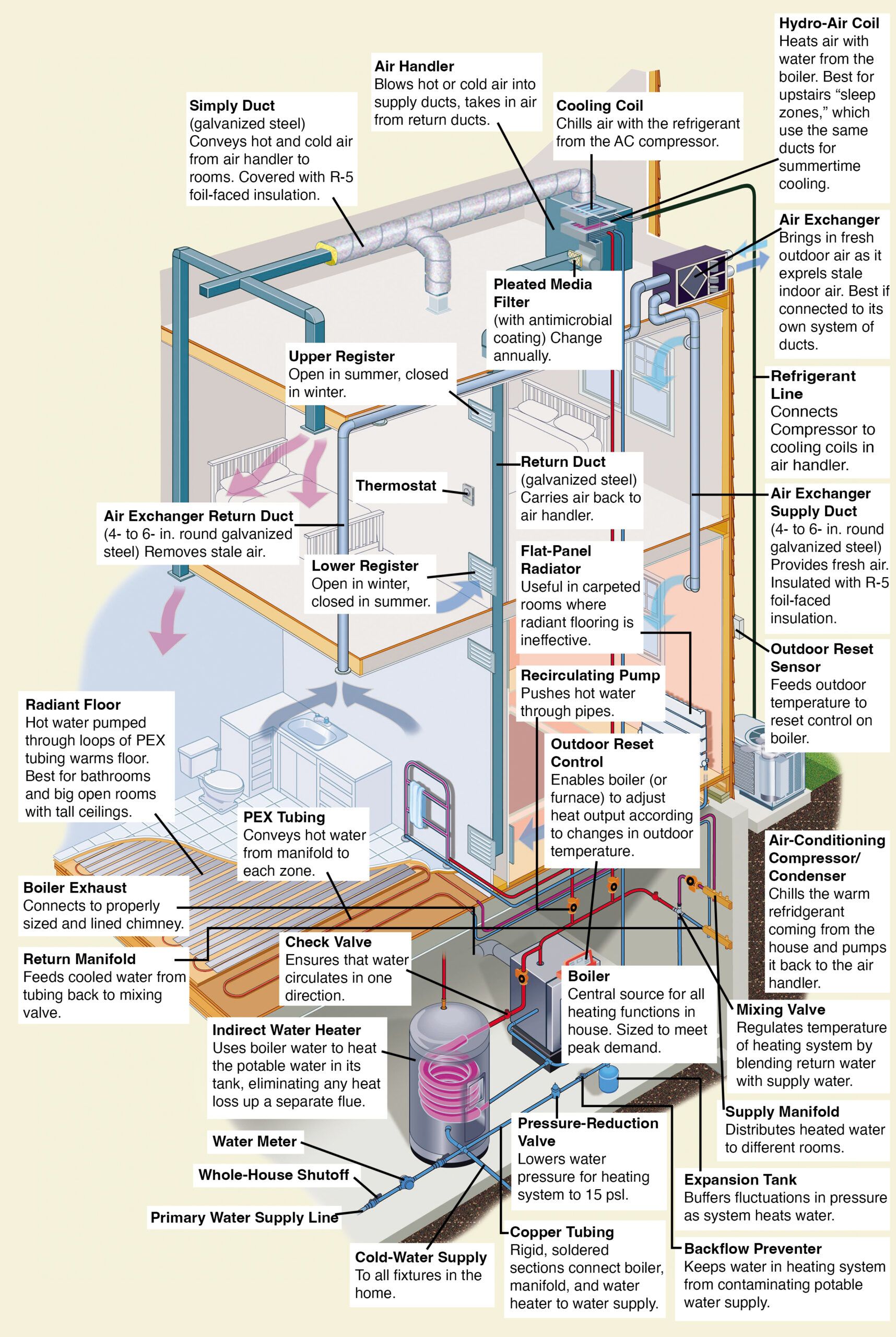
Energy Efficiency in HVAC Design
Energy efficiency is key in HVAC design so that systems are both cost-effective and environmentally friendly.
High-Efficiency HVAC Units
Look for HVAC equipment with the Energy Star label, which indicates high efficiency. As Richard Trethewey, This Old House plumbing and heating expert, advises, “Proper sizing and installation are critical. Hire reputable installers who know how to perform heat-loss calculations, and insist on components that have earned the Energy Star high-efficiency rating. “
Smart Thermostats and Controls
Smart thermostats can significantly improve your HVAC system’s efficiency by learning your habits and adjusting temperatures automatically. Some systems even use outdoor temperature sensors to optimize performance.
Insulation and Its Impact on HVAC Performance
Proper insulation maintains indoor temperatures and reducing the workload on your HVAC system. Make sure your home is well-insulated to maximize energy efficiency and comfort.
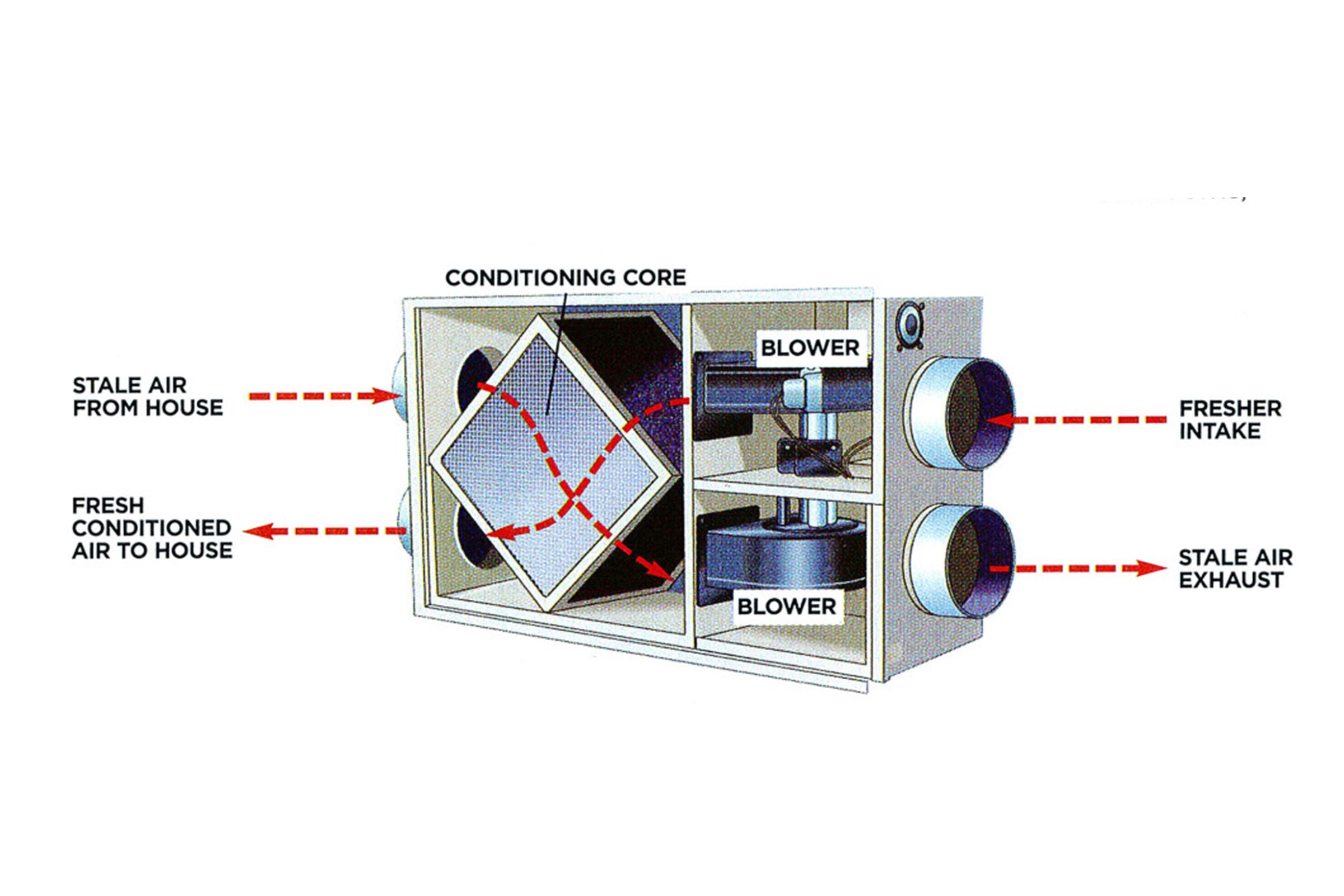
Installation Considerations for New HVAC Systems
When installing a new HVAC system, there are several considerations to achieve peak performance and efficiency.
Proper Sizing and Heat-Loss Calculations
Accurate sizing determines HVAC performance. Oversized systems can lead to inefficiency and increased wear. As Trethewey notes, “Make sure the contractor performs a heat-loss calculation—a measure based on a house’s insulation levels, airtightness, and the local climate—and orders equipment that meets peak demand without any additional safety factor. “
Placement of HVAC Units
The location of your HVAC equipment can affect its efficiency and lifespan. Indoor units should be easily accessible for maintenance, while outdoor units need proper clearance for airflow. Trethewey recommends “leaving 3 feet of clear space to allow airflow, avoid fire risks, and conduct annual maintenance. “
Integrating with Home Design
Consider how your HVAC system will integrate with your home’s design. This includes planning for ductwork, vents, and the placement of indoor and outdoor units. Early planning can lead to a more seamless and efficient installation.
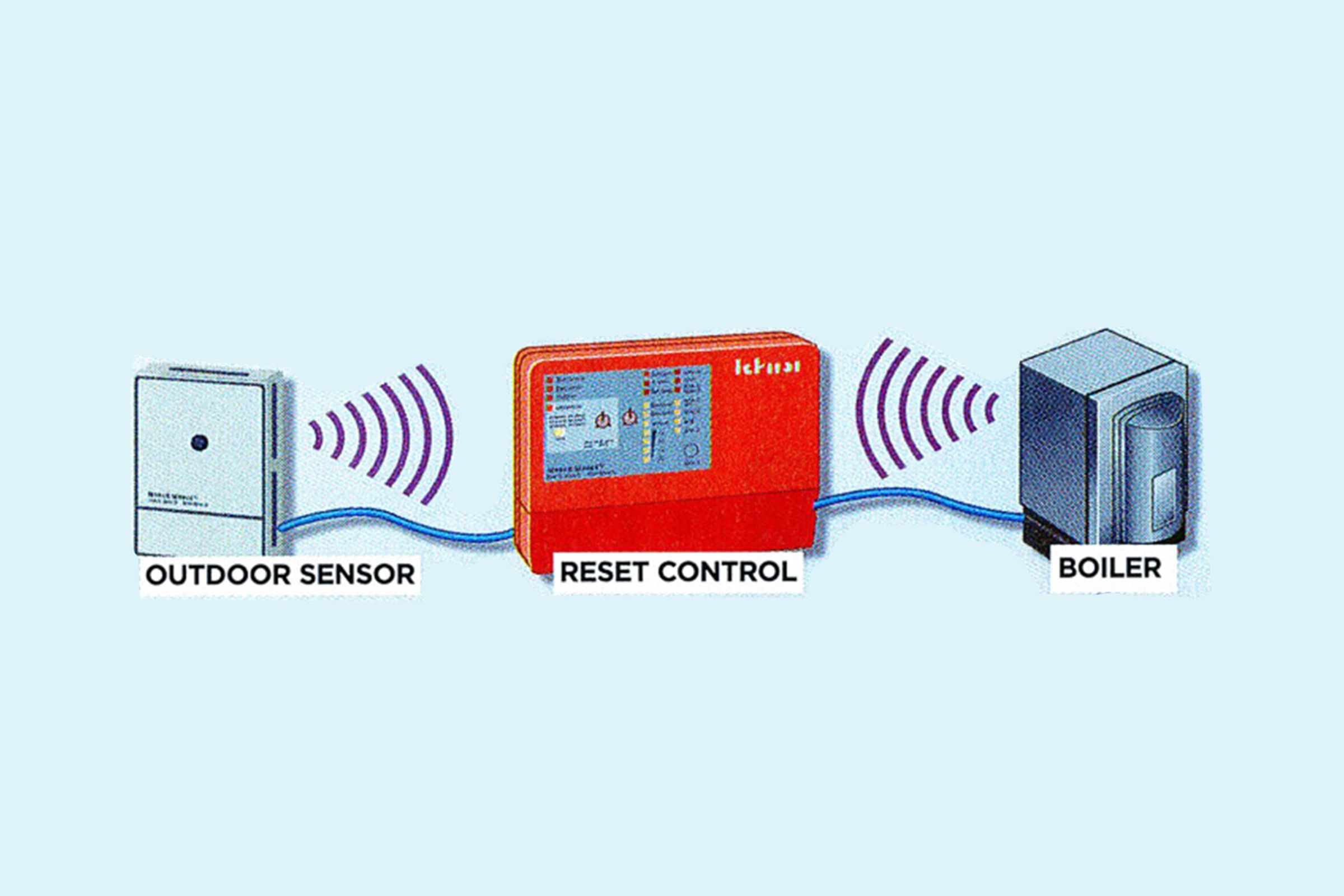
Innovative HVAC Technologies
Emerging technologies offer new ways to improve HVAC efficiency and comfort.
- Condensing gas boilers: Condensing boilers extract additional heat from exhaust gasses, achieving efficiencies of up to 96%. This technology represents a significant advancement in boiler efficiency.
- Hybrid air exchangers: These units address air quality concerns in tightly sealed homes. They bring in fresh outdoor air while expelling stale indoor air, and can also help with temperature and humidity control. Trethewey predicts, “Sooner or later, every house will need one of these units. “
- Radiant floor heating: Radiant floor heating uses pipes or electric wires under the floor to provide gentle, efficient warmth. This technology offers comfortable heat distribution and can be more energy-efficient than traditional forced-air systems.
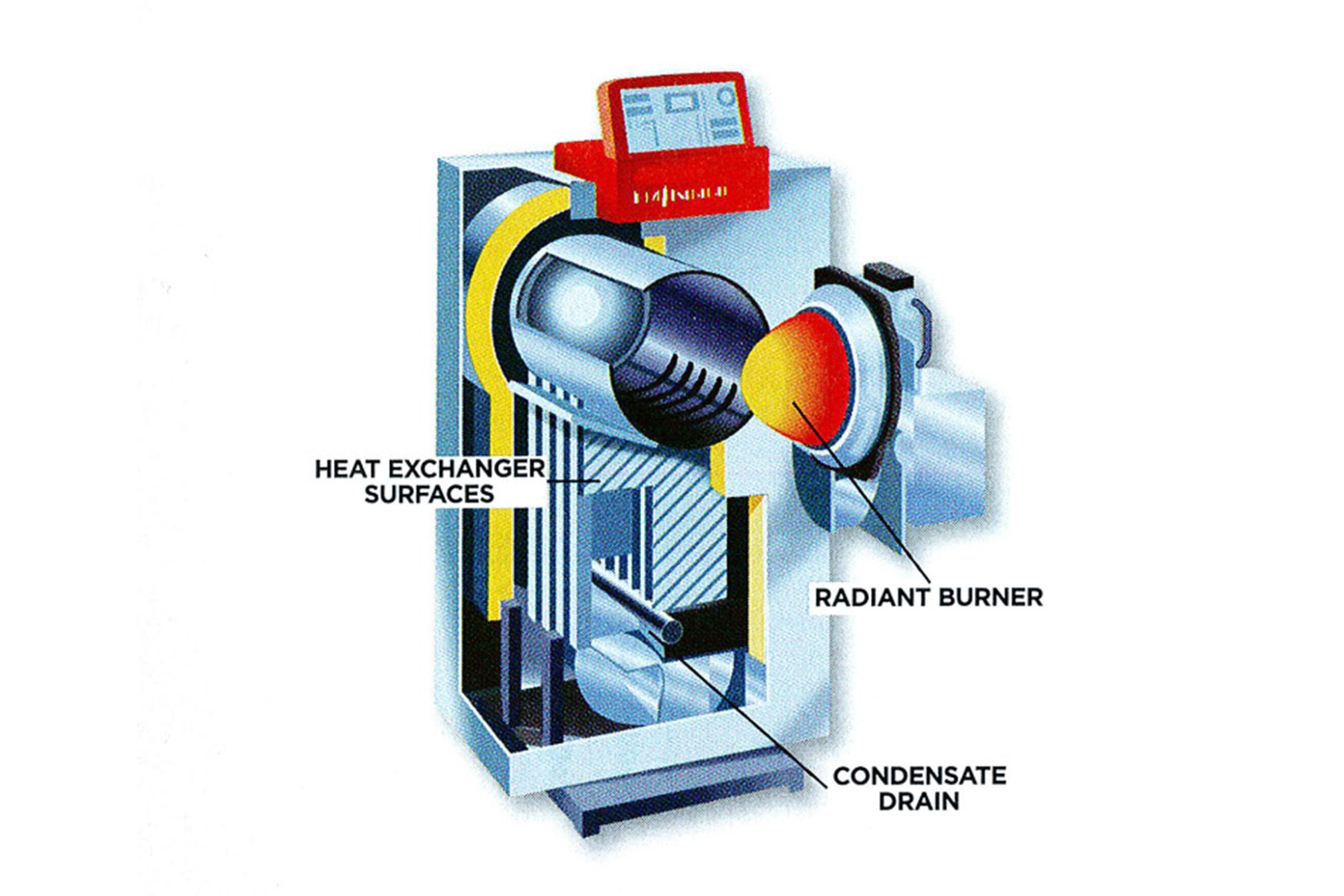
Maintaining Your HVAC System
Maintaining your HVAC system improves its longevity and efficiency.
Regular Maintenance Tasks
Perform simple maintenance tasks like changing filters regularly and keeping outdoor units clear of debris. These steps can help maintain efficiency and extend the life of your system.
When To Call a Professional
Schedule annual professional maintenance to keep your system running efficiently. As Trethewey points out, “You wouldn’t let your car go more than a year without a checkup, would you?” Professional service can identify and address potential issues before they become major problems.
Common HVAC Mistakes To Avoid
Avoiding common HVAC mistakes can save you money and improve your system’s performance.
- Ignoring annual tune-ups: Regular professional maintenance is necessary for top performance and longevity of your HVAC system. Don’t skip annual check-ups and cleanings.
- Neglecting air filtration: High-quality air filters determine indoor air quality and protect your HVAC equipment. Trethewey recommends using “thick, pleated media filters with antimicrobial coatings.”
- Oversizing your system: An oversized system can lead to frequent on-off cycling, reduced efficiency, and increased wear. Check that your contractor performs accurate calculations to size your system correctly.
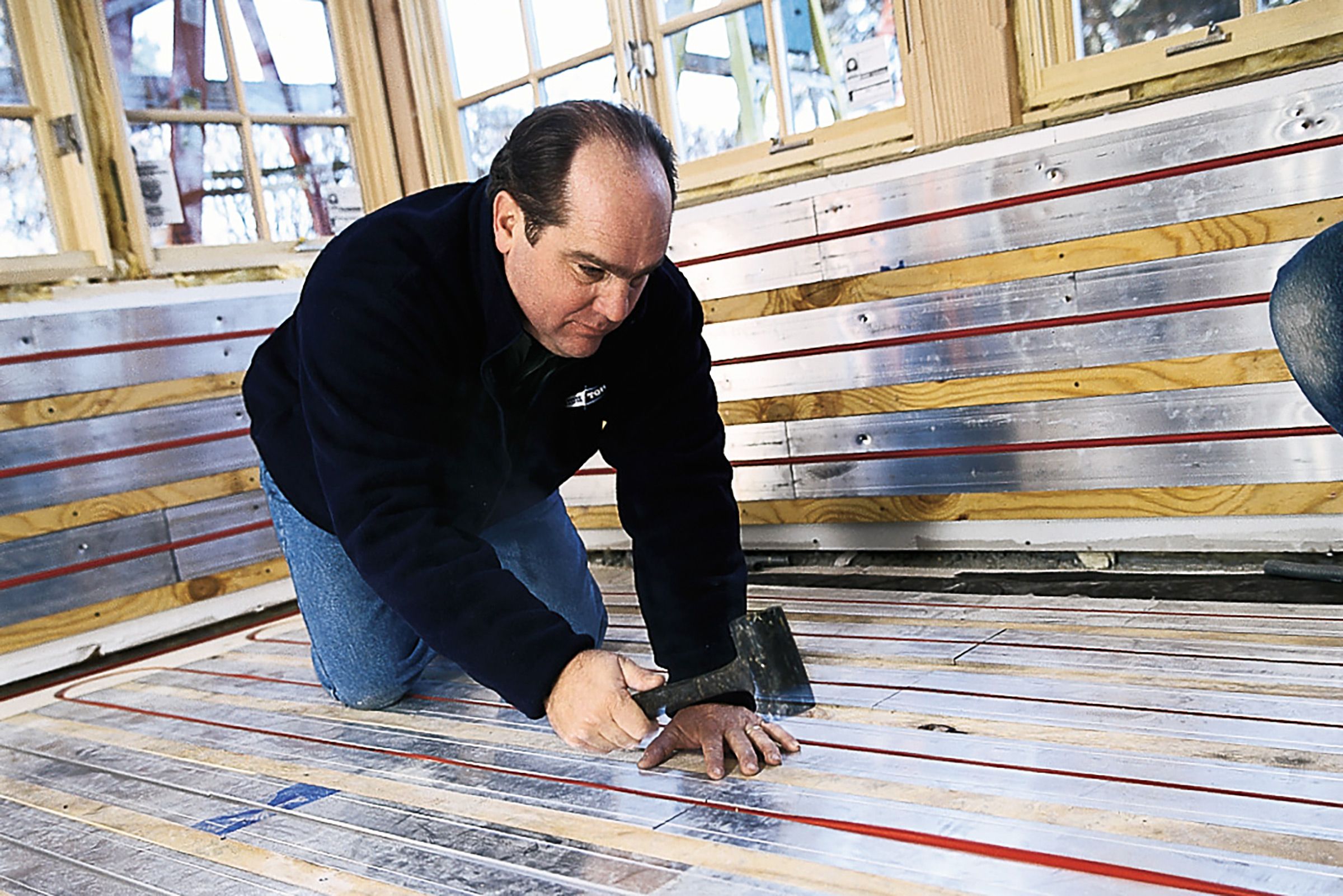
Cost Factors in HVAC Installation and Operation
The costs of HVAC installation and operation include various factors to consider when budgeting.
Initial Installation Costs
The cost of installing a new HVAC system can vary widely depending on the type of system, home size, and local labor rates. Expect to invest $2,500–$8,000 for a complete system installation.*
*Prices via Angi and HomeGuide.
Long-Term Energy Savings
While high-efficiency systems may have higher upfront costs, they can lead to significant long-term savings on energy bills. Consider the lifetime costs when choosing your HVAC system.
Financing Options for HVAC Systems
Many HVAC companies offer financing options to help spread out the cost of a new system. Additionally, some utility companies and government programs provide rebates or incentives for installing energy-efficient HVAC systems.
DIY HVAC vs. Professional Installation
Deciding whether to undertake HVAC installation as a DIY project or to hire professionals can impact both performance and safety. Minor HVAC maintenance tasks, such as replacing filters and cleaning vents, can often be handled by homeowners. However, DIY installations or major repairs require a deeper understanding of HVAC systems. Mistakes during installation can lead to inefficiency, potential damage, or even safety hazards like gas leaks or electrical issues.
Benefits of Professional Installation
Hiring a professional guarantees that your HVAC system is installed correctly and operates at peak efficiency. Professionals have the necessary training to conduct heat-loss calculations, properly size the system, and makes sure all components work harmoniously. They are also well-versed in local building codes and can secure the necessary permits.
When to Consider DIY
For those confident in their skills and with prior experience, certain tasks like installing a smart thermostat or sealing ductwork may be manageable DIY projects. However, always consult with a professional to understand what tasks are suitable for DIY and which require expert intervention.
